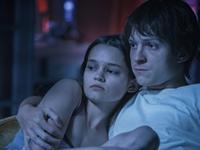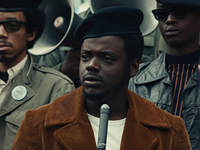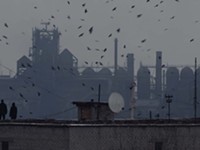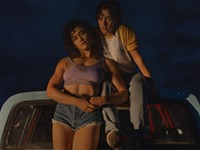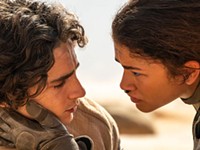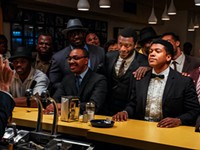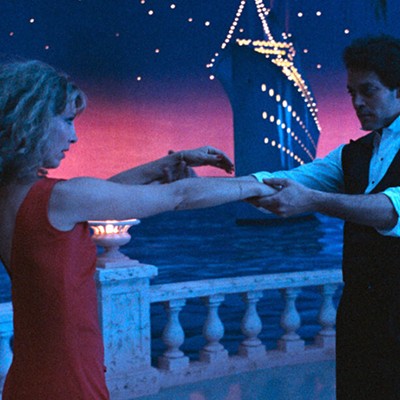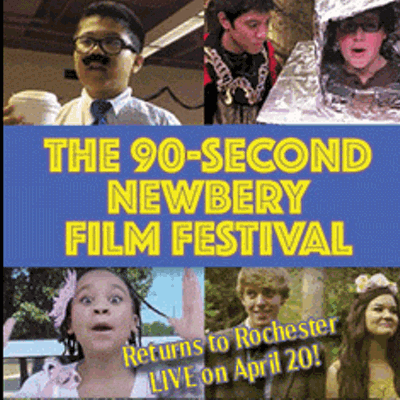[
{
"name": "500x250 Ad",
"insertPoint": "5",
"component": "15667920",
"parentWrapperClass": "",
"requiredCountToDisplay": "1"
}
]
During a Q&A following the premiere of "Mad Max: Fury Road," director George Miller namechecked film historian Kevin Brownlow and his seminal book, "The Parade's Gone By," citing it as a crucial instructional tool for any director of modern action films. That book, focusing on the silent film era, provides a clue as to why, with its scant dialogue, big emotions, and epic storytelling, "Mad Max: Fury Road" itself frequently feels like an old silent movie. Just, you know, an incredibly loud one.
It's been 30 years since the release of "Mad Max Beyond Thunderdome," the previous installment in Miller's post-apocalyptic action trilogy centered around the terse, lone-wolf hero Max Rockatansky (played in those past films by a young Mel Gibson), who roared across the desolate Australian outback in his black Interceptor. Those films owed a great deal to exploitation cinema and classic Westerns, but with the long-delayed "Mad Max: Fury Road," Miller retools his franchise into a grandiose symphony of grit, twisted metal, and roaring engines.
Taking place in the charred remnants of the world after civilization has died -- killed off by battles over oil and water, and eventually through nuclear war -- the earth has been left irreparably poisoned, and many of the surviving inhabitants show signs of radioactive illness; tumors, gout, and various other deformities. As the film opens, Max (Tom Hardy) is captured by a band of War Boys: meth-faced, albino minions of the fearsome despot known as Immortan Joe (Hugh Keays-Byrne, who played Toecutter in the original "Mad Max"). Fanatics devoted to Joe's cause, the War Boys are eager to die in a blaze of glory, incited by Joe's promises of a place in Valhalla. Max is brought to The Citadel, Joe's desert compound, where he's kept alive to be used as a blood bag for a wounded War Boy named Nux (Nicholas Hoult).
Then Joe's most trusted lieutenant, Imperator Furiosa (Charlize Theron) veers off course during what should be a standard supply run, driving her massive war rig off into the desert. She's carrying with her Joe's five "brides" (Rosie Huntington-Whiteley, Zoë Kravitz, Riley Keough, Abbey Lee, and Courtney Eaton), perfect females that the warlord has kept imprisoned for the purposes of birthing him healthy babies (boys, preferably). Furiosa and her illegal cargo make a mad dash across the desert toward the sanctuary of "The Green Place," and Joe responds by mobilizing a fleet of War Boys to reclaim his property. Among their number is Nux, with Max chained to the front of his vehicle like a living, screaming hood ornament. From there, we're off, and "Fury Road" never stops moving, presenting a visceral, never-ending series of ever-escalating chases.
At 70 years old, George Miller has put his younger peers to shame, producing an instant classic of the genre. His film is packed with thrillingly kinetic action sequences, filled with unforgettable images; the world of "Mad Max" is a marvel of production and costume design. Each frame is brimming with details that demonstrate how much thought and care went into building this universe. This includes what's already the breakout character of the summer movie season: the so-called Doof Warrior, an apocalyptic version of the war drummers that once accompanied armies into battle. Dangling from a bungee cord, he rides upon a vehicle piled high with amps, shredding away on a flame-throwing guitar and providing the non-stop chases with their propulsive beat (actually composed by musician Junkie XL).
Miller presents a world in which everyone is commodified and treated as property. The phrase "we are not things" is seen scrawled on the wall of the brides' prison after they escape, though that statement applies not only to the brides, but to every character on screen. It's an idea indicative of the humanistic approach that Miller takes in his rendition of the summer blockbuster. Despite the sparse dialogue, there's just enough development so that every character gets their own arc. The brides all have distinct personalities, and we come to know each of the characters not through tedious exposition, but through the actions they take.
The jaw-dropping scenes of largely practical stunt work pay off in some of the most exciting, tactical action put to film in some time. Monstrous, rusted-out death rigs hurtle forward, crashing into each other in a revved-up demolition derby, and it's spectacular. If ever there was a film that should nudge the Academy into finally creating an Oscar category for stunt work, it's this one. With beautiful, hyper-saturated images courtesy cinematographer John Seale (brought out of retirement for this feature), the film is gorgeous. If anything, the computer-aided environments are so pretty that they occasionally detract from the real-life stunts being performed. When it comes to blockbuster films we've come to expect realistically-rendered impossibilities, so when we're presented with honest-to-god death-defying feats, we tend not to trust what our eyes are seeing.
"Mad Max: Fury Road" also distinguishes itself through an unabashed feminist streak. It's the rare action movie (or any genre for that matter) that not only passes the Bechdel test, but does so with flying colors. At a certain point, there are 12 women on screen, all talking to one another, never about a man. For a film with a plotline about women being treated as sex slaves, it's never exploitative. We're never forced to witness their abuse, and only meet the women after they've escaped. The film's mindset can be summed up by the first clear look we get of the freed brides: rejoicing as they use a bolt cutter to help each other break free of their painful-looking chastity belts.
Though Hardy is technically playing the same character as Gibson in the original trilogy, there are some minor changes to this iteration of the character, tweaking his backstory and making the "Mad" moniker a little more obvious. Throughout, he's haunted by hallucinations and visions of the wife and daughter he failed to save. At first motivated solely by his instinct to survive, Max begrudgingly joins Furiosa's cause, having no qualms about playing the sidekick. In one great moment, he allows Furiosa to grab a rifle from him and then use his body to steady her aim. Even when communicating mostly through grunts and growls, Hardy is still as charismatic as ever.
But the film truly belongs to Theron. With her shaved head, a face painted with engine grease, and a prosthetic mechanical arm, she paints an imposing figure; her Furiosa emerges as the best female lead in an action film since Ellen Ripley and Sarah Connor. The film never pauses to spell out the reasons for Furiosa's behavior. It's not necessary. Theron's eyes convey everything we need to know, her presence providing the film its howling, ferocious, wounded heart.

